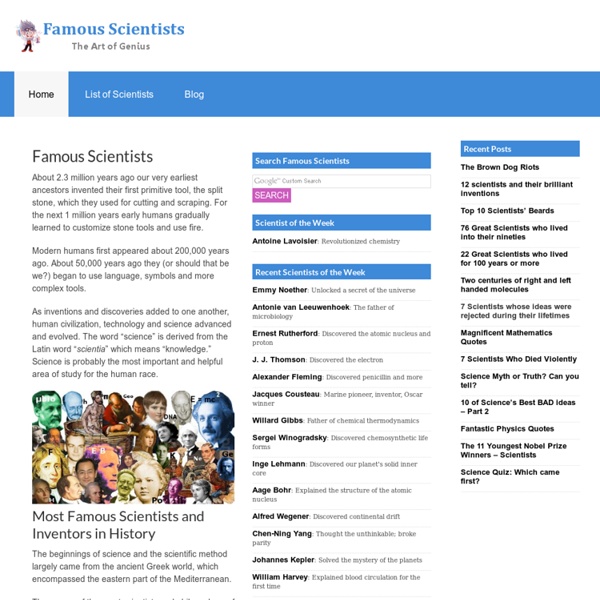FAMOUS SCIENTISTS

SCIENCE LAB SAFETY
7. Be prepared for your work in the laboratory. Read all procedures thoroughly before entering the laboratory. Never fool around in the laboratory. 8. 9. 10. 11. 12. 13. 14. 15. 16.
Homepage | Science Buzz
DNA - The Double Helix
Lists of Nobel Prizes and Laureates DNA - The Double Helix Play the DNA - The Double Helix Game About the game Most living organisms have the same sort of genetic material, DNA, in their cells. The Nobel Prize The 1962 Nobel Prize in Physiology or Medicine was awarded for the discovery of the molecular structure of DNA – the double helix. Reading The Discovery of the Molecular Structure of DNA - The Double Helix » Share this: To cite this pageMLA style: "DNA - The Double Helix". Recommended: The Legacy of Alfred Nobel On 27 November 1895 Alfred Nobel signed his last will in Paris. Play the Blood Typing Game Try to save some patients and learn about human blood types! Unlocking the Secrets of Our Cells Discover the 2012 awarded research on stem cells and cell signalling. Contact E-mail us Press Sitemap A-Z Index Frequently Asked Questions Terms Follow Contact | Press | Sitemap | FAQ | Terms Copyright © Nobel Media AB 2014 Follow us: Follow us: Facebook Google+ Twitter YouTube Nobelprize.org Monthly Nobel Prize App
Related:
Related:



